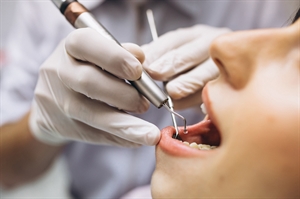All Categories
Featured
Table of Contents
In Canyon Country, CA, Pamela Pena and Joe Mills Learned About Places In Frederick Md
What Is Basic Dental Care? Dental care is very important to everyone. It is a way that you can maintain a healthy oral health and to keep your teeth from becoming decayed or infected. Here are some reasons why it is important to get regular dental checkups. Brushing, flossing are all basic dental hygiene that one must practice on a regular basis. One needs to ensure that all the elements of basic dentistry are practiced to ensure that quality oral health is achieved. This is also necessary to prevent cavities and to maintain oral hygiene. It is also essential to remove plaque, dead cells and bacteria from the teeth. There are many dental products available today to accomplish these functions and at the same time provide a healthy smile to the individual. It is important to remember that some dental procedures may be necessary to treat a cavity or disease. The procedure is known as an orthodontic procedure and a crown is typically placed on the tooth to support the tooth. Crowns may also be used to protect a tooth from infection. There are other types of problems as well such as tooth decay and gum disease. Gum disease can result in gingivitis. If you have gingivitis and you neglect your teeth, it can cause gum disease. It is important to see your dentist on a regular basis for these types of problems. When visiting a dentist's office for this type of procedure, the patient is advised to follow the doctor's recommendation regarding how often he or she should clean their teeth and gums. Some professionals believe the best way to maintain proper dental hygiene is through daily brushing, while others prefer to practice twice or three times a day. Another common type of problem is gum disease. Your dentist can diagnose this condition by taking a close look at your mouth. They will be able to tell you what needs to be done for your condition and if you need dental treatment or not. You should always remember that oral health is very important. You want your mouth to be free of bacteria and other things that can cause infections. You should always brush, floss and use a fluoride mouthwash to keep your mouth healthy. Dental hygienists perform the actual cleaning process when the patient enters the dentist's office and performs their oral care. They are trained in using the equipment and the dentist cleans the teeth and removes plaque and bacteria from the teeth. Many dental clinics also offer mouthwash and other types of dental products. Mouthwash is commonly used for those who have sore gums or cracked or chipped teeth. Bacteria can build up and can cause tooth decay. This will lead to gum disease, if your dentist does not remove the bacteria from the teeth. If you do not brush your teeth often enough or do not brush at all, your teeth can get covered with bacteria. The teeth are very delicate and require regular cleaning to prevent tooth decay. The dentist will usually clean the teeth between professional visits. Some common practices include using a root canal to treat cavity problems and maintaining the overall health of the teeth and gums. The dentist may also recommend braces to help strengthen the teeth. It can be very important to see your dentist for these types of oral problems. You do not want to wait to see a specialist. Most people have their problems fixed in the first visit, but they may need to see a specialist for more complicated conditions. Dental care is extremely important. You never know when you may need it. Your dentist can help you get the oral problems you need and prevent them from happening. Once you get better, you will be able to keep your teeth healthy and your smile beautiful for years to come.
City in Maryland, United StatesFrederick, MarylandCity of FrederickBridge on Carroll CreekMotto( s): "The City of Clustered Spires" Location within the State of MarylandShow map of MarylandFrederick (the United States) Program map of the United StatesCoordinates: Coordinates: United States Founded1745Government MayorMichael O'Connor (D-MD) Board of AldermenKelly Russell (D-MD) Ben MacShane (D-MD) Derek Shackleford (D-MD) Donna Kuzemchak (D-MD) Roger Wilson (D-MD) Area City24.
28 km2) Land23. 95 sq mi (62. 02 km2) Water0. 10 sq mi (0. 26 km2) Elevation302 ft (92 m) Population City65,239 Estimate 72,244 Density3,016. 95/sq mi (1,164. 84/km2) Urban141,576 (US: 230th)UTC5 (EST) Summer (DST)UTC4 (EDT) 21701-21709301, 24024-30325GNIS feature ID0584497I-70, I-270, United States 15, United States 40, US 340, MD 80, MD 144, MD 355Website Frederick is a city in, and the county seat, of Frederick County, Maryland.
Frederick has long been an important crossroads, situated at the crossway of a significant northsouth Indian path and eastwest routes to the Chesapeake Bay, both at Baltimore and what ended up being Washington, D.C. and throughout the Appalachian mountains to the Ohio River watershed. It belongs of the Washington-Arlington-Alexandria, DC-VA-MD-WV Metropolitan Statistical Area, which belongs to a higher Washington-Baltimore-Arlington, DC-MD-VA-WV-PA Combined Statistical Location.
Frederick is home to Frederick Municipal Airport (IATA: FDK), which accommodates general air travel, and to the county's biggest company U.S. Army's Fort Detrick bioscience/communications research study setup. Located where Catoctin Mountain (the easternmost ridge of the Blue Ridge mountains) satisfies the rolling hills of the Piedmont area, the Frederick location became a crossroads even before European explorers and traders showed up.
This ended up being referred to as the Monocacy Trail or even the Great Indian Warpath, with some travelers continuing southward through the "Great Appalachian Valley" (Shenandoah Valley, and so on) to the western Piedmont in North Carolina, or taking a trip down other watersheds in Virginia toward the Chesapeake Bay, such as those of the Rappahannock, James and York Rivers.

Established before 1730, when the Indian trail became a wagon road, Monocacy was abandoned prior to the American Revolutionary War, maybe due to the river's routine flooding or hostilities predating the French and Indian War, or merely Frederick's much better location with simpler access to the Potomac River near its confluence with the Monocacy.
Three years earlier, All Saints Church had been founded on a hilltop near a warehouse/trading post. Sources disagree as to which Frederick the town was named for, but the likeliest candidates are Frederick Calvert, sixth Baron Baltimore (one of the proprietors of Maryland), Frederick Louis, Prince of Wales, and Frederick "The Great" of Prussia.
Frederick Town (now Frederick) was made the county seat of Frederick County. The county originally reached the Appalachian mountains (areas more west being contested between the nests of Virginia and Pennsylvania till 1789). The existing town's first home was developed by a young German Reformed schoolmaster from the Rhineland Palatinate named Johann Thomas Schley (passed away 1790), who led a party of immigrants (including his other half, Maria Von Winz) to the Maryland colony.
In West Palm Beach, FL, Princess Stevenson and Sage Weiss Learned About What To Do In Frederick Md Today
Schley's settlers likewise founded a German Reformed Church (today called Evangelical Reformed Church, and part of the UCC). Most likely the oldest home still standing in Frederick today is Schifferstadt, built in 1756 by German inhabitant Joseph Brunner and now the Schifferstadt Architectural Museum. Schley's group was amongst the numerous Pennsylvania Dutch (ethnic Germans) (in addition to Scots-Irish and French and later Irish) who migrated south and westward in the late-18th century.
Another essential path continued along the Potomac River from near Frederick, to Hagerstown, where it split. One branch crossed the Potomac River near Martinsburg, West Virginia and continued down into the Shenandoah valley. The other continued west to Cumberland, Maryland and ultimately crossed the Appalachian Mountains into the watershed of the Ohio River.
However, the British after the Pronouncement of 1763 restricted that westward migration path until after the American Revolutionary War. Other westward migrants continued south from Frederick to Roanoke along the Great Wagon Roadway, crossing the Appalachians into Kentucky and Tennessee at the Cumberland Space near the Virginia/North Carolina border. Other German inhabitants in Frederick were Evangelical Lutherans, led by Rev.
They moved their objective church from Monocacy to what ended up being a large complex a few blocks further down Church Street from the Anglicans and the German Reformed Church. Methodist missionary Robert Strawbridge accepted an invitation to preach at Frederick town in 1770, and Francis Asbury arrived two years later on, both assisting to found a congregation which became Calvary Methodist Church, worshiping in a log structure from 1792 (although superseded by bigger buildings in 1841, 1865, 1910 and 1930).
Jean DuBois was designated in 1792, which became St. John the Evangelist Church (built in 1800). To control this crossroads during the American Transformation, the British garrisoned a German Hessian regiment in the town; the war (the stone, L-shaped "Hessian Barracks" still stand). All Saints Church, put up 1813, Principal Parish Church till 1855As the county seat for Western Maryland, Frederick not only was a crucial market town, but also the seat of justice.
Important legal representatives who practiced in Frederick included John Hanson, Francis Scott Secret and Roger B. Taney. Church Street with All Saints and Reformed Church spires, FrederickFrederick was also understood during the 19th century for its religious pluralism, with one of its main thoroughfares, Church Street, hosting about a half dozen significant churches.


That original colonial building was replaced in 1814 by a brick classical revival structure. It still stands today, although the primary worship space has actually become an even bigger brick gothic church joining it at the back and facing Frederick's Municipal government (so the parish stays the earliest Episcopal Church in western Maryland).
John the Evangelist, was integrated in 1800, then rebuilt in 1837 (throughout the street) one block north of Church Street on East Second Street, where it still stands along with a school and convent developed by the Visitation Siblings. The stone Evangelical Lutheran Church of 1752 was likewise rebuilt and enlarged in 1825, then changed by the present twin-spired structure in 1852.
In 48423, Paige Huerta and Sterling Payne Learned About Downtown Frederick Things To Do
It became an African-American congregation in 1864, renamed Asbury Methodist Episcopal Church in 1870, and developed its existing building on All Saints Street in 1921. Together, these churches controlled the town, set versus the backdrop of the first ridge of the Appalachians, Catoctin Mountain. The abolitionist poet John Greenleaf Whittier later on immortalized this view of Frederick in his poem to Barbara Fritchie: "The clustered spires of Frederick stand/ Green-walled by the hills of Maryland." When U.S.
Louis (ultimately built to Vandalia, then the state capital of Illinois), the "National Pike" ran through Frederick along Patrick Street. (This later on ended up being U.S. Path 40.) Frederick's Jacob Engelbrecht corresponded with Jefferson in 1824 (receiving a transcribed psalm in return), and kept a journal from 1819-1878 which remains a crucial first-hand account of 19th century life from its viewpoint on the National Road.
Church Street by a regional medical professional to avoid the city from extending Record Street south through his land to satisfy West Patrick Street. Frederick also turned into one of the new nation's leading mining counties in the early 19th century. It exported gold, copper, limestone, marble, iron and other minerals. As early as the American Revolution, Catoctin Furnace near Thurmont became essential for iron production.
Frederick had easy access to the Chesapeake and Ohio Canal, which began operations in 1831 and continued transporting freight up until 1924. Also in 1831, the Baltimore and Ohio Railway (B&O) completed its Frederick Branch line from the Frederick (or Monocacy) Junction off the primary Western Line from Baltimore to Harpers Ferry, Cumberland, and the Ohio River.
Louis by the 1850s. Confederate troops marching south on North Market Street during the Civil War Frederick became Maryland's capital city briefly in 1861, as the legislature moved from Annapolis to vote on the secession question. President Lincoln jailed a number of members, and the assembly was unable to assemble a quorum to vote on secession.
Servants also left from or through Frederick (given that Maryland was still a "slave state" although an unseceded border state) to join the Union forces, work against the Confederacy and seek flexibility. Throughout the Maryland campaigns, both Union and Confederate soldiers marched through the city. Frederick likewise hosted a number of healthcare facilities to nurse the injured from those battles, as belongs in the National Museum of Civil War Medication on East Patrick Street.
Union Major General Jesse L. Reno's IX Corps followed Jackson's males through the city a couple of days later on the way to the Fight of South Mountain, where Reno died. The sites of the fights are due west of the city along the National Road, west of Burkittsville. Confederate troops under Jackson and Walker unsuccessfully tried to halt the Federal army's westward advance into the Cumberland Valley and towards Sharpsburg.
The 1889 memorial celebrating Major General Reno and the Union soldiers of his IX Corps is on Reno Monolith Road west of Middletown, just listed below the summit of Fox's Gap, as is a 1993 memorial to slain Confederate Brig. Gen. Samuel Garland Jr., and the North Carolina soldiers who held the line.
In Fort Washington, MD, Ayaan Melton and Jagger Fitzgerald Learned About Activities In Frederick Md
George McClellan after the Fight of South Mountain and the Battle of Antietam, provided a short speech at what was then the B. & O. Railway depot at the current intersection of East All Saints and South Market Streets. A plaque celebrates the speech (at what is today the Frederick Neighborhood Action Company, a Social Providers workplace).
The Army of the Potomac camped around the Prospect Hall property for the numerous days as skirmishers pursued Lee's Confederate Army of Northern Virginia prior to Gettysburg. A large granite rectangle-shaped monolith made from one of the stones at the "Devil's Den" in Gettysburg to the east along the driveway commemorates the midnight change-of-command.
27 million in 2019 dollars) from citizens for not taking down the city on their method to Washington D.C. Union soldiers under Major General Lew Wallace fought a successful delaying action, in what became the last substantial Confederate advance at the Fight of Monocacy, likewise called the "Battle that conserved Washington." The Monocacy National Battleground lies just southeast of the city limits, along the Monocacy River at the B.
Railroad junction where two bridges cross the stream - an iron-truss bridge for the railway and a covered wooden bridge for the Frederick-Urbana-Georgetown Pike, which was the website of the main battle of July 1864. Some skirmishing took place further northeast of town at the stone-arched "Jug Bridge" where the National Roadway crossed the Monocacy; and a weapons barrage occurred along the National Road west of town near Red Guy's Hill and Possibility Hall mansion as the Union troops pulled back eastward.
While Gettysburg National Battleground of 1863 lies roughly 35 miles (56 km) to the north-northeast. The reconstructed house of Barbara Fritchie stands on West Patrick Street, simply previous Carroll Creek direct park. Fritchie, a considerable figure in Maryland history in her own right, is buried in Frederick's Mount Olivet Cemetery.
Roosevelt when they stopped here in 1941 on an automobile journey to the governmental retreat, then called "Shangra-La" (now "Camp David") within the Catoctin Mountains near Thurmont. Admiral Winfield Scott Schley (18391911) was born at "Richfields", the estate house of his dad. He became an important marine leader of the American fleet on board his flagship and heavy cruiser USS Baltimore in addition to Admiral William T.
Major Henry Schley's child, Dr. Fairfax Schley, was critical in setting up the Frederick County Agricultural Society and the Great Frederick Fair. Gilmer Schley functioned as Mayor from 1919 to 1922, and the Schleys remained among the town's leading households into the late-20th century. Nathaniel Wilson Schley, a prominent banker, and his spouse Mary Margaret Schley helped arrange and raise funds for the yearly Excellent Frederick Fair, one of the two largest agricultural fairs in the State.
Table of Contents
Latest Posts
In Soddy Daisy, TN, Jaylynn Holland and Rhett Velez Learned About Fun Things To Do In Frederick Md
In 20735, Ciara Davidson and Damian Pennington Learned About What To Do In Maryland This Weekend
In 28803, Macey Wilkinson and Angeline Chapman Learned About Activities In Frederick Md
More
Latest Posts
In Soddy Daisy, TN, Jaylynn Holland and Rhett Velez Learned About Fun Things To Do In Frederick Md
In 20735, Ciara Davidson and Damian Pennington Learned About What To Do In Maryland This Weekend
In 28803, Macey Wilkinson and Angeline Chapman Learned About Activities In Frederick Md